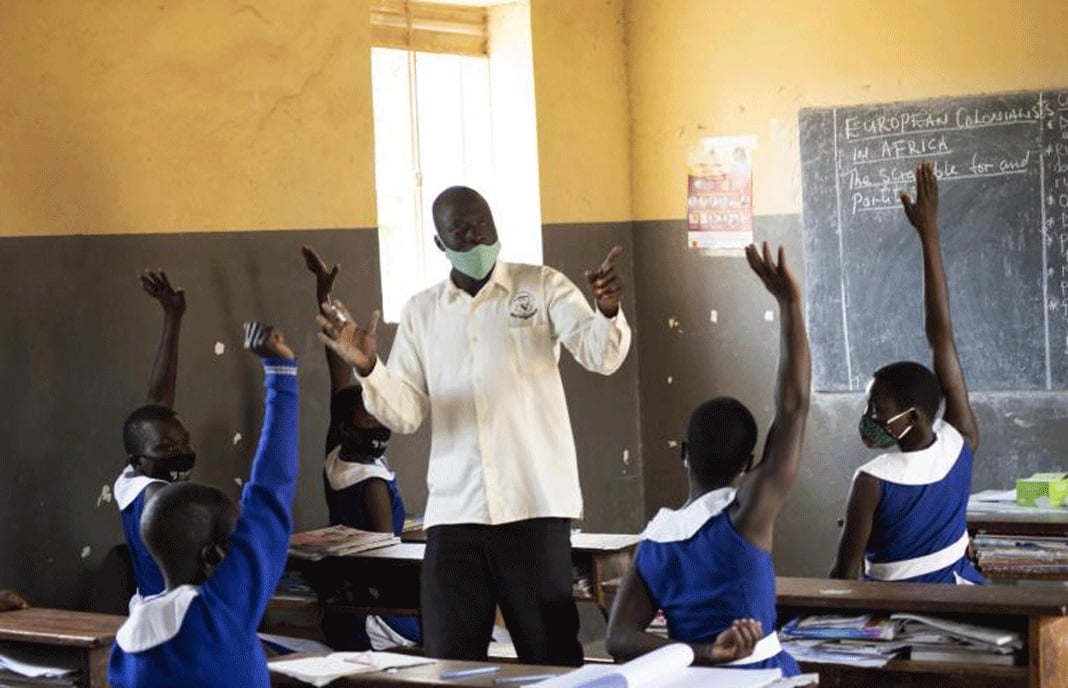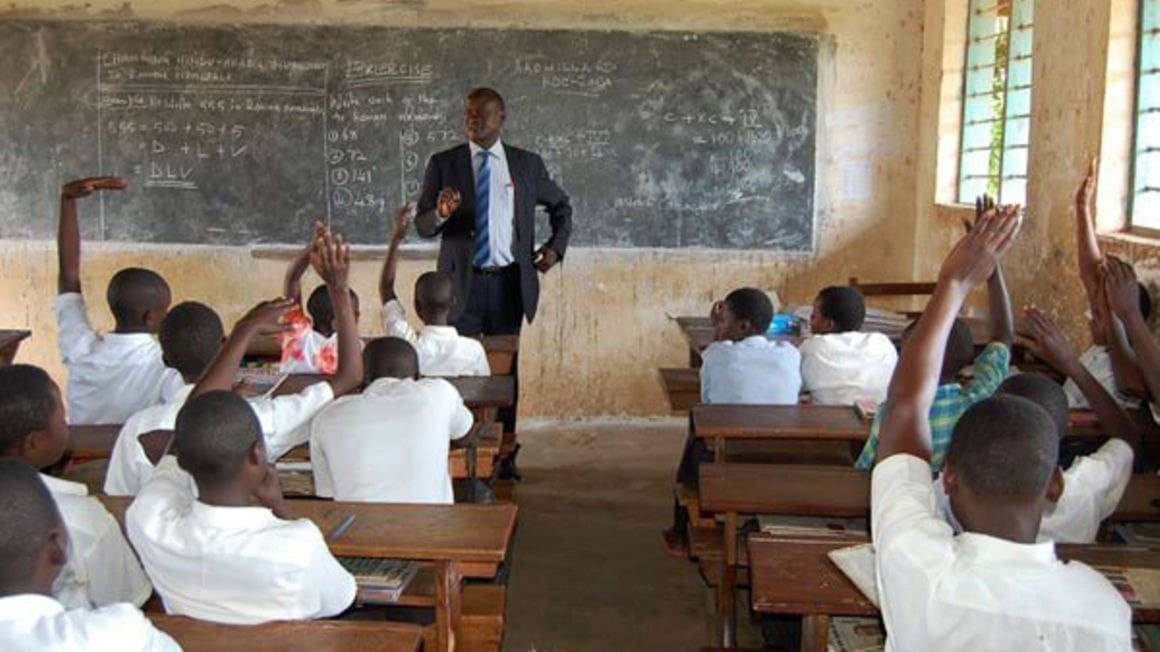Prime
Shs1.5 trillion lost in teacher absenteeism

Some of the head teachers react as they unpack their smartphones they received from government under the Teacher Effectiveness and Learner Achievement project in Nebbi District on January 25, 2023. PHOTO | FILE
What you need to know:
- Ms Ketty Lamaro, the Education ministry permanent secretary, says teacher absenteeism remains a major bottleneck, the very reason the ministry introduced the Teacher Effectiveness and Learner Achievement automated system to try and combat the vice.
Uganda’s education sector lost Shs1.9 trillion to corruption and teachers’ absenteeism between January and June of 2022, details from a report recently issued by the Inspectorate of Government has showed.
“It was established that the highest measurable annual cost of corruption in the education sector occurs due to teachers’ absenteeism, which costs the taxpayer Shs1.5 trillion in instructional time. The study established that absenteeism is a complex problem determined by diverse factors,” the Inspectorate’s biannual performance report for 2022, released mid-last month, says in part.
Loss of public education funds through embezzlement was reported as the second biggest conduit for corruption in the sector, with Shs244.6 billion said to have been stolen during the period studied.
This was followed by absenteeism, whose estimated cost to the budget was placed at Shs180.5 billion, and bribery at Shs39.08 billion.
In an interview with Sunday Monitor, Ms Ketty Lamaro, the Education ministry permanent secretary, agreed that teacher absenteeism remains a major bottleneck.
“Absenteeism is a big problem and many studies have shown that absenteeism is the major problem affecting our performance. Many teachers and head teachers are absent because they are working in more than one school,” Ms Lamaro said.
Ms Lamaro revealed this was partly the reason government introduced the Teacher Effectiveness and Learner Achievement (TELA) automated system to try and combat the vice.
She explained that the system initially required all teachers to login at their duty stations by use of a thumb print. The finger print login was later upgrade to include facial recognition technology in the hope that this would be a more efficient tracking system.
The system has, however, continued to run into one problem after another.
“We moved from finger print to face recognition because we found [it] to be more water-tight,” Ms Lamaro said, before lamenting that technical issues affected implementations.
Among the difficulties faced is poor Internet coverage in the country, which makes TELA inoperable in many upcountry schools.
Ms Lamaro recommended that other players within the education sector combine efforts to tackle the challenge of teacher absenteeism.
“There should be more monitoring at all levels instead of leaving it to the ministry alone. We don’t even have the funds for inspection and that is why we thought this system can do better from my office. I can see whoever is not in school if the system is working perfectly,” Ms Lamaro said.
Mr Filbert Baguma, the secretary general of Uganda National Teachers’ Union (Unatu), told Sunday Monitor that he believes the worst is yet to come.
“It is unfortunate and regrettable that we have degenerated to that level,” he said, adding: “It will be worse than this in the coming days because of the salary discrepancies and the economic situation at hand.”
Mr Baguma further said what is being witnessed is a classic case of putting the cart ahead of the horse.
He said the government introduced TELA to record and track teacher absenteeism in schools before addressing the concerns of teachers.
“The silence of the government on addressing the issue of teacher welfare makes it impossible for us to do away with absenteeism. We need to look into the issues and causes of absenteeism,” he told Sunday Monitor.
He added: “For example, you want to police teachers by bringing TELA machines and yet they don’t work in the current situation [machines] in Uganda, which struggles with network challenges and power issues.”
While appearing on our sister radio station, KFM, Mr Moses Byaruhanga, a senior presidential advisor, tried to explain the challenges faced from the post-Covid pandemic perspective.
“During Covid-19, people started doing dual careers and occupations and I think it increased the dividing of attention. You find that the private school is performing very well partly because there is supervision. So, the most important thing for this teacher or head teacher in the government school, they should take the school as if it was theirs to ensure teachers teach and those who don’t teach, action is taken, ” he said.
Mr Byaruhanga called for more support of the government’s technological approach to wiping out vices such as corruption.
“The TELA system will ensure people don’t dodge classes; both students and the teachers, but especially the teachers,” Mr Byaruhanga said.
However, Mr Gerald Karyeija, the dean of public administration of the School of Management Science at Uganda Management Institute, opined that there is a cultural dimension to the problem.
“Part of the absenteeism in rural areas is cultural. For instance, when a person dies in the village, it is understandable for everybody to go and bury or express solidarity,” he said.
Because of this, Mr Kareija said focus ought to be placed on cultural adjustment mechanisms, especially in rural areas.
He also advocates for the strengthening of leadership and supervisory skills in schools, plus putting in place a strong reward system for good performers in schools.
How IGG arrived at the total figure
Mr Peter Mwebesa, the manager for research and learning at the IGG’s office, told Sunday Monitor that in the education sector, teacher absenteeism results in the loss of education hours for students, which loss was monetised by the Inspectorate of Government in arriving at the losses reported.
“On average, teaching time is seven hours per day. But 1.9 hours of classroom time is lost due to absenteeism per day, which adds up to 478 hours annually for one student. There are 9,600,000 students in secondary and primary school. The average cost of teaching per student is Shs3,269. Therefore, the cost [of absenteeism] is 478 hours multiplied by 9,600,000 students multiplied by Shs3,269, which comes to is Shs1.47 trillion,” he said.




